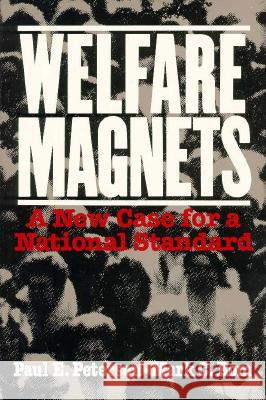Welfare Magnets: A New Case for a National Standard » książka
Welfare Magnets: A New Case for a National Standard
ISBN-13: 9780815770213 / Angielski / Miękka / 1990 / 178 str.
"The best way of handling the question of how much to give the poor, politicians have discovered, is to avoid doing anything about it at all," note Paul Peterson and Mark Rom. The issue of the minimum people need in order to live decently is so difficult that Congress has left this crucial question to the states --even though the federal government foots three-fourths of the bill for about 15 million Americans who receive cash and food stamp benefits.
The states differ widely in their assessment of what a family needs to meet a reasonable standard of living, and the interstate differences in welfare benefits cannot be explained by variations in wage levels or costs of living. The states with higher welfare benefits act as magnets by attracting or retaining poor people. In the competition to avoid becoming welfare havens, states have cut welfare benefits in real dollars by more than one-third since 1970. The authors propose the establishment of a minimum federal welfare standard, which would both reduce the interstate variation in welfare benefits and stem their overall decline.
Peterson and Rom develop their argument in four steps. First they show how the politics of welfare magnets works in a case study of policymaking in Wisconsin. Second, they present their analysis of the overall magnet effect in American state politics, finding evidence that states with high welfare benefits experiencing disproportionate growth in their poverty rates make deeper welfare cuts. Third, they describe the process by which the current system came into being, identifying the reform efforts and political crises that have contributed to the centralization of welfare policy as well as the regional, partisan, and group interests that have resisted these changes. Finally, the authors propose a practical step that can go a long way toward achieving a national welfare standard; then assess it's cost, benefits, and political feasibility.











